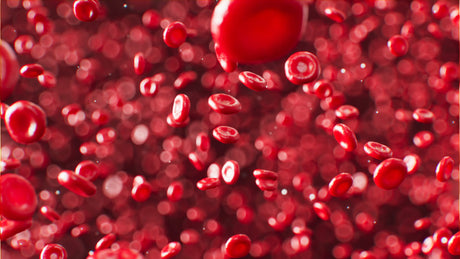The Science Behind Red Light Therapy and Aging
At its core, red light therapy works by delivering specific wavelengths of red (around 630-700 nm) and near-infrared (NIR, around 800-900 nm) light directly to the body's cells. Unlike UV light, RLT doesn't cause damage; instead, it's absorbed by the mitochondria – the "powerhouses" within our cells. This absorption stimulates a process that increases the production of adenosine triphosphate (ATP), the primary energy currency of the cell.
For seniors, this cellular energy boost can translate into several direct and indirect benefits:
Key Benefits of Red Light Therapy for Seniors
1. Enhanced Pain Management
Chronic pain, often stemming from conditions like arthritis, neuropathy, or past injuries, is a significant concern for many seniors. RLT can offer a targeted approach to pain relief:
-
Reduced Inflammation: Red and NIR light have a well-documented anti-inflammatory effect. By calming cellular inflammation, RLT can alleviate discomfort in joints and muscles.
-
Improved Circulation: Increased blood flow to treated areas helps deliver oxygen and nutrients while removing metabolic waste, supporting tissue healing and reducing pain.
-
Muscle and Joint Support: Studies indicate RLT can help with joint stiffness and pain associated with osteoarthritis by modulating inflammatory pathways and promoting cartilage health.
2. Skin Health and Anti-Aging
The visible signs of aging – wrinkles, fine lines, and reduced skin elasticity – are largely due to decreased collagen and elastin production. RLT addresses these by:
-
Stimulating Collagen Production: Red light penetrates the skin to stimulate fibroblasts, cells responsible for producing collagen and elastin, leading to firmer, smoother skin.
-
Improving Skin Tone and Texture: Regular use can help reduce hyperpigmentation, redness, and improve overall skin radiance by promoting cellular regeneration.
-
Accelerated Wound Healing: For seniors, skin can be more fragile, and wounds may heal slower. RLT enhances cellular repair mechanisms, making it beneficial for minor cuts, abrasions, and post-surgical recovery.
3. Enhanced Sleep Quality
Sleep disturbances are common in older adults. Red light, especially when used in the evening, may contribute to better sleep by:
-
Supporting Melatonin Production: Unlike blue light, which can suppress melatonin, red light is not disruptive to the body's natural circadian rhythm. Some research suggests it might even support natural melatonin synthesis.
-
Relaxation: The gentle warmth and soothing nature of RLT can have a calming effect, preparing the body for rest.
4. Cognitive Support (Emerging Research)
While more research is ongoing, preliminary studies suggest that transcranial near-infrared light therapy may have neuroprotective effects and support cognitive function in older adults by:
-
Improving Cerebral Blood Flow: Enhanced circulation to the brain can support neuronal health.
-
Reducing Neuroinflammation: Alleviating inflammation in brain tissues may contribute to better cognitive outcomes.
-
Note: This is a specialized application and usually requires specific devices designed for brain therapy.
-
5. Eye Health (Caution Advised)
Some emerging research points to potential benefits of specific red light wavelengths for age-related macular degeneration (AMD).
-
Always Consult a Specialist: This is a delicate area. Any application around the eyes should only be done under the strict guidance of an ophthalmologist using devices specifically designed and approved for ocular use. Never use general-purpose RLT devices directly on or near the eyes without professional medical advice.
Essential Safety Tips for Seniors Using Red Light Therapy
While RLT is generally considered safe and well-tolerated, specific considerations for seniors ensure a positive experience.
-
Consult Your Doctor First: This is the most crucial step. Before starting any new therapy, especially if you have pre-existing medical conditions (e.g., cancer, epilepsy, pacemakers, photosensitivity disorders) or are taking medications (e.g., photosensitizing drugs), consult your healthcare provider. They can advise if RLT is appropriate for you.
-
Start Low and Go Slow: Begin with shorter sessions (e.g., 5-7 minutes) and gradually increase duration as your body adjusts. Don't immediately jump to the maximum recommended time.
-
Adhere to Device Instructions: Every RLT device is different. Carefully read and follow the manufacturer's guidelines for session duration, distance from the skin, and frequency of use. Do not exceed recommended exposure times.
-
Protect Your Eyes: While red and NIR light are generally safe for the eyes, the bright LEDs can be uncomfortable. Most high-powered devices come with protective eyewear. Always use it, especially when treating areas near your face. If your device doesn't include goggles, consider purchasing certified protective eyewear.
-
Stay Hydrated: While not directly related to RLT side effects, maintaining good hydration is always important, especially for seniors, and complements overall wellness.
-
Monitor Your Skin: Pay attention to how your skin responds. While rare, mild warmth or redness can occur. If you experience any discomfort, irritation, or unusual reactions, stop use and consult your doctor.
-
Choose Reputable Devices: Invest in a high-quality device from a reputable manufacturer that provides transparent specifications (wavelengths, irradiance), safety certifications, and customer support. Avoid cheap, unverified products.
-
Avoid Overexposure: More isn't always better. Excessive use beyond recommended guidelines may not yield additional benefits and could potentially lead to a less optimal response due to the "biphasic dose response" phenomenon.
-
Keep it Clean: Regularly clean your device according to manufacturer instructions, especially if it comes into direct contact with skin.
-
Listen to Your Body: If a session feels uncomfortable or causes any adverse effects, discontinue use. Your individual response is the best guide.
Conclusion
Red light therapy offers a compelling, non-pharmacological avenue for seniors to support their well-being, from mitigating pain and enhancing skin vitality to potentially improving sleep. By understanding its scientific basis and diligently adhering to safety protocols, older adults can confidently integrate this beneficial technology into their daily routines, fostering a greater sense of comfort and vitality in their golden years. Always remember that RLT is a complementary therapy and should not replace professional medical advice or treatments.









